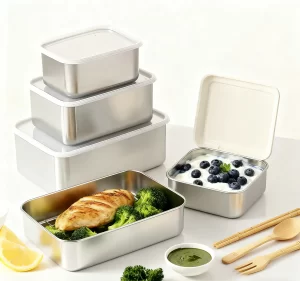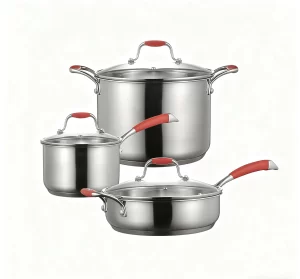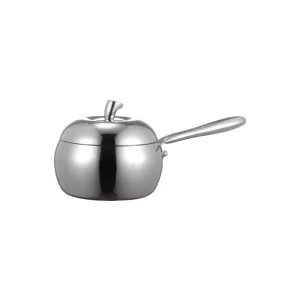In a competitive marketplace, a great product begins with a strong supply chain. You can never underestimate the importance of a custom cookware strategy when it comes to developing some cookware that aligns with the identity of your brand, performance parameters, and price.
Como professional wholesale cookware manufacturer that owns more than 20 years of OEM/ODM experience, Chances is writing this guide to offer assistance to brand owners and procurers through the practical process of designing cookware, sourcing it, and launching a custom cookware range – with an emphasis on specifications, compliance, and how your choice in cookware manufacturing impacts success.
Índice
AlternarWhy Choose Custom Cookware?
By customizing, you get control of material, performance, finish, and packaging so the product aligns with your intended customer and margin model. Thus, when competing, a brand that invests in custom cookware will win on differentiation with finishes, ergonomics, performance (heat distribution, induction compatible, etc.), and packaging. Retailers and foodservice buyers benefit from carrying custom lines as they generate fewer returns and help with bundle messaging.
OEM vs ODM — Pick the Right Path
There are two common routes in the custom cookware project:
- OEM (Original Equipment Manufacturer): You provide drawings and specs; the factory produces to your design. Best if you have product engineering capability and want full control of IP.
- ODM (Original Design Manufacturer): The factory proposes proven designs you can rebrand and slightly customize. Faster and lower upfront cost — ideal for testing SKUs.
Choose OEM when exclusivity and product uniqueness matter. Choose ODM to speed market entry and minimize tooling expense. A hybrid approach (start with ODM, graduate to OEM tooling) is common in cookware manufacturing.
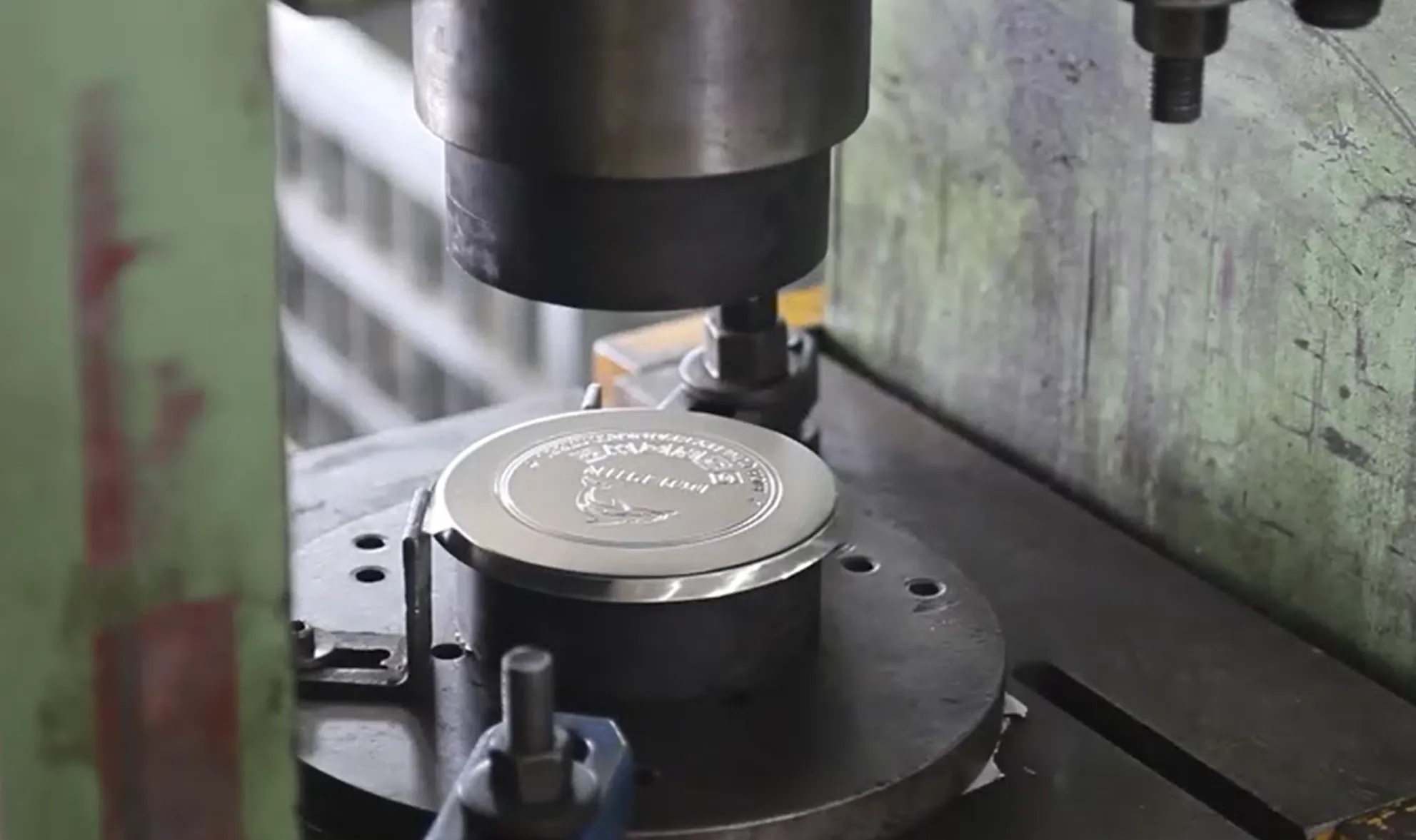
Materials & Core Construction Decisions
Material choice is the foundation of product performance and compliance:
- Stainless steel (304/316): Food-safe, corrosion-resistant; 316 for coastal or industrial use.
- Aluminum / hard-anodized: Excellent thermal responsiveness; anodizing prevents leaching.
- Multi-ply (tri-ply, 5-ply): Bonded aluminum/copper cores deliver even heating and prevent hot spots — a major selling point.
- Cast iron/carbon steel: Superb heat retention and searing; heavier, often positioned as premium or traditional.
In your product brief, specify alloy grade, core thickness (mm), total clad depth, and whether the clad extends up the sides — these details matter far more in kitchen performance than marketing copy.
Design & Functional Customization
Custom options include shape, gauge, handle system, lid design, and base engineering:
- Shapes & profiles: Skillets, saute pans, woks, stockpots — each requires different wall angles and flared rims.
- Thickness & weight: Indicate preferred base thickness (e.g., 3.0–4.0 mm equivalent) to avoid warping.
- Handles: Welded stainless, riveted, silicone-wrapped, or detachable designs. Heat break engineering is key for chef safety.
- Bases: Full-clad vs disc-clad, honeycomb textures, or laser-etched patterns for hybrid release properties.
Define target use cases (home, restaurant, induction, oven-safe) so the cookware manufacturing partner can recommend the right structural choices.
Surface, Coating & Finish
Finish affects aesthetics, maintenance, and cost of your custom cookware:
- Mirror polish vs brushed satin — choose mirror for premium presentation; satin for durable, low-maintenance pro kitchens.
- Passivation/electropolishing improves corrosion resistance and is often required by export markets.
- Nonstick systems — PTFE, ceramic, or reinforced coatings each have trade-offs in durability and test requirements. Specify abrasion cycles, adhesion values, and PFOA/PFOS limits if coatings are used.
Include finish metrics (Ra values, gloss units, abrasion cycles) in the spec to avoid subjective disputes on acceptance.
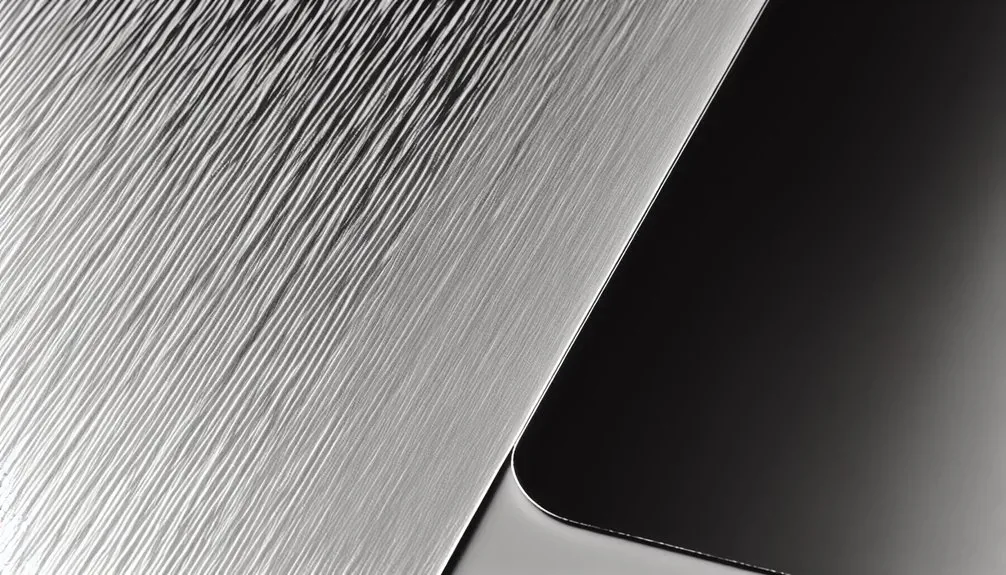
Compliance, Testing & QC
Regulatory compliance is a top priority when sourcing a custom cookware supply. Require documentation and testing:
- Materials: MTRs (mill test reports) showing alloy composition.
- Safety tests: Migration/heavy-metal reports, LFGB or FDA certifications where relevant.
- Performance tests: Salt spray, thermal cycling, induction compatibility, dishwasher-cycle survival, coating adhesion, and abrasion.
- Factory QC: IQC/IPQC/FQC/OQC steps, AQL acceptance levels, and pre-shipment inspection options.
For B2B buyers, demand batch traceability and retention of test reports as part of contract terms.
Tooling, Lead Times & MOQ
Tooling defines cost and timing:
- ODM runs may accept MOQs of a few hundred units; OEM tooling commonly needs 500–2,000 pcs, depending on category.
- Sample schedule: Prototype (7–20 days), tooling (25–45 days), pilot production and sign-off, then mass production (35–60 days typical).
- Ask for a cost breakdown: tooling amortization, unit cost, packaging, inspection, and freight.
Plan buffer stock around seasonal peaks — cookware demand and factory lead times both surge ahead of holidays.
Packaging, Branding & Market Readiness
Custom packaging is the last mile of differentiation:
- Offer retail-ready boxes, gift sets, multilingual manuals, and certification inserts.
- Consider UPC/barcode packaging and SKU bundling rules for retailers.
- Design care guides that reduce misuse (e.g., dishwasher settings, utensil guidance) to lower returns.
A complete custom cookware proposition includes sell-in assets: images, spec sheets, and point-of-sale materials.
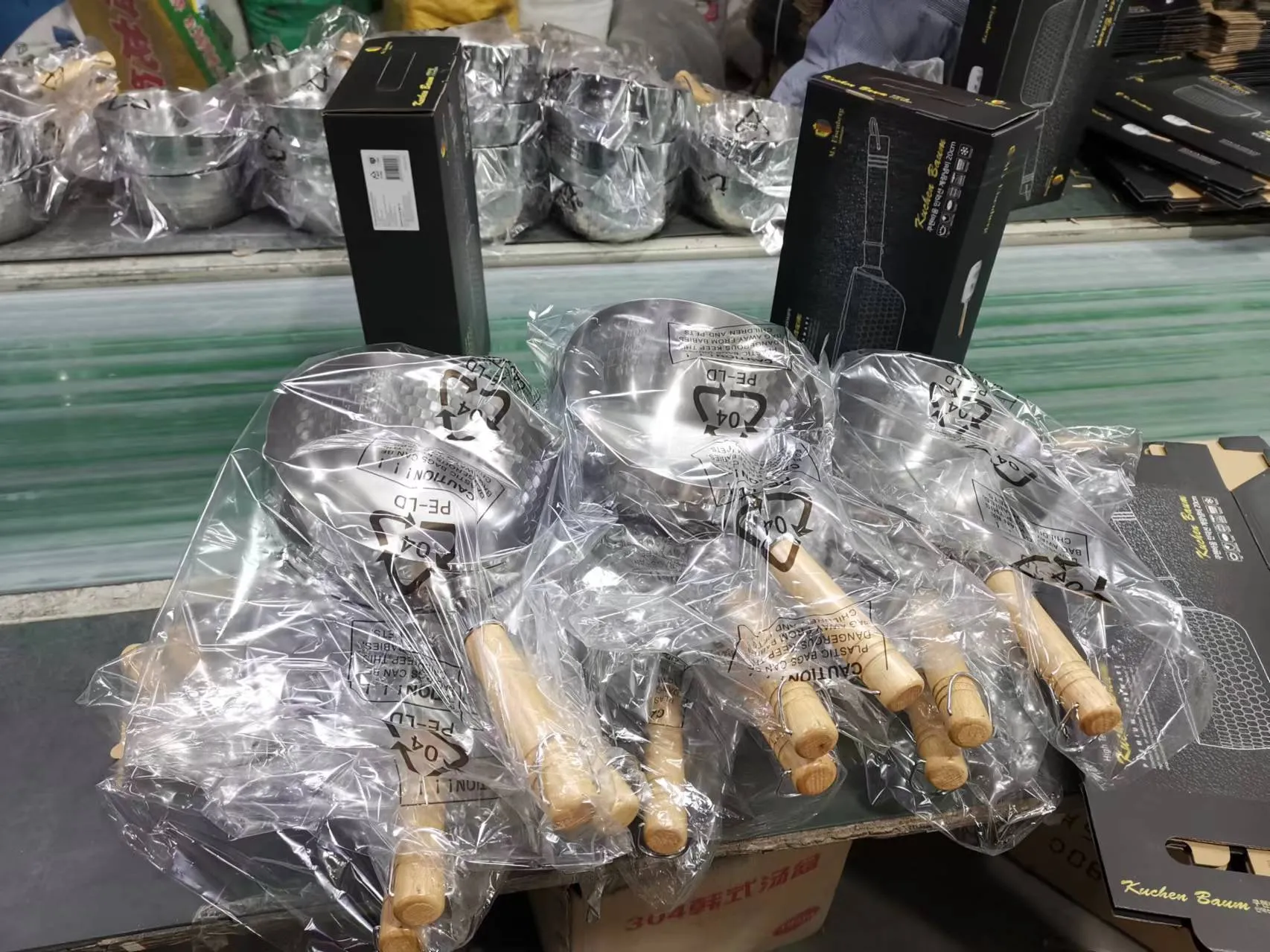
Step-by-step Custom Cookware Launch Roadmap
- Define market, price band, and target KPIs.
- Create a concise product brief with materials, finish, and performance specs.
- Solicit proposals from vetted cookware manufacturing partners (ask for MTRs & test reports).
- Approve the PP sample and run pilot production.
- Execute mass production with agreed QC checkpoints and shipping plan.
- Publish product with care guides and after-sales support.
Conclusão
By establishing the classification of materials, specifications for the structure, metrics for the finish, and requirements for compliance, and partnering with a transparent cookware manufacturing supplier, the custom cookware risk is minimized, time to market is expedited, and the end product is capable of building loyalty when you partner with a cookware manufacturing supplier that embraces transparency.
Sobre Chances

As a specialized fabricante de utensílios de cozinha em aço inoxidável, Chances supports global buyers with engineered wholesale cookware supply and precision-built soluções personalizadas de utensílios de cozinha em aço inoxidável. With over a decade of OEM/ODM manufacturing experience, our factory integrates sheet-metal forming, multi-layer bonding, automated polishing, and durability testing to maintain consistent material performance and structural integrity. End-to-end in-house production ensures reliable lead times, controlled tolerances.
FAQ — Common Project Pitfalls & How to Avoid Them
Q1: Why is a pre-production (PP) sample not enough?
A1: A PP sample proves design, but mass production can differ; lock down PP approval with signed specs and run a pilot batch on the target production line to validate tooling, settings, and QC before full run.
Q2: How do unclear specs derail a project?
A2: Vague requirements cause rework and disputes — always use measurable parameters (e.g., material grade, thickness in mm, surface Ra, gloss units, abrasion/cycle counts) and include them in the contract and sample sign-off.
Q3: What happens if I skip compliance documentation?
A3: You risk customs holds, market rejections, and liability; demand MTRs, migration/heavy-metal, and salt-spray reports (and any market-specific certificates) before issuing the PO.
Q4: How can logistics be underestimated?
A4: Poor planning creates delays and damaged goods — factor in duties, lead time buffers, palletization, ISTA packaging tests, and agreed Incoterms; require factory packaging specs and photos before shipment.
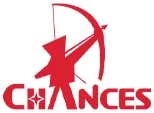
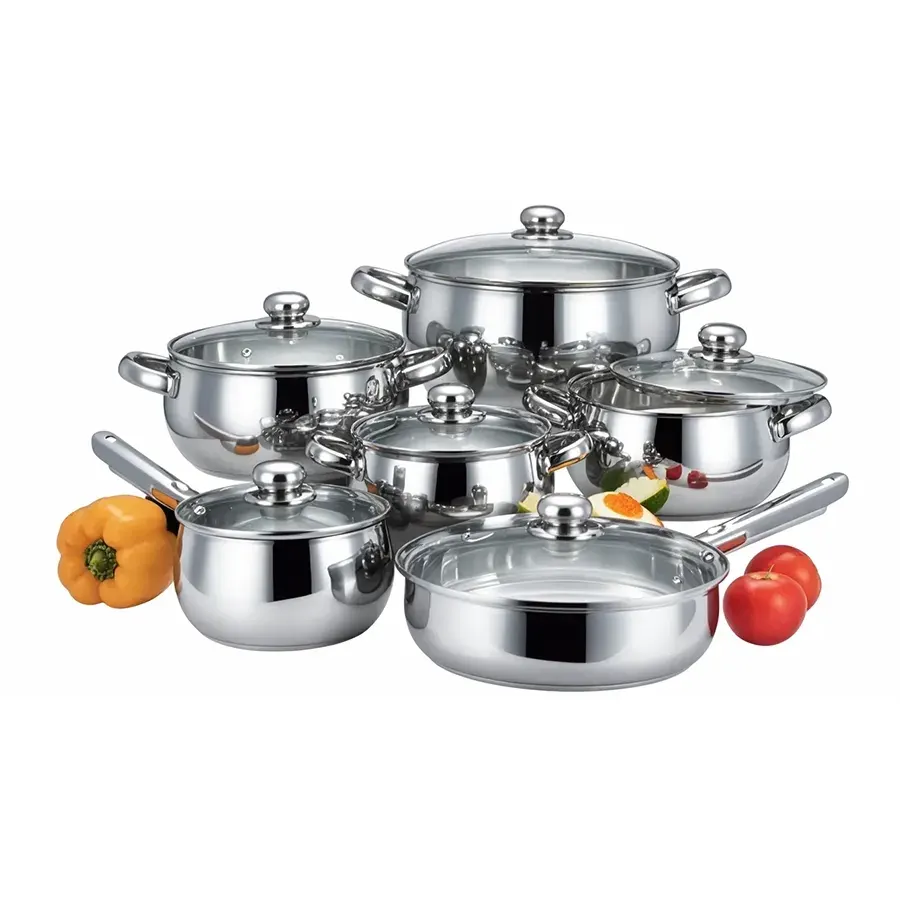
-300x282.webp)
